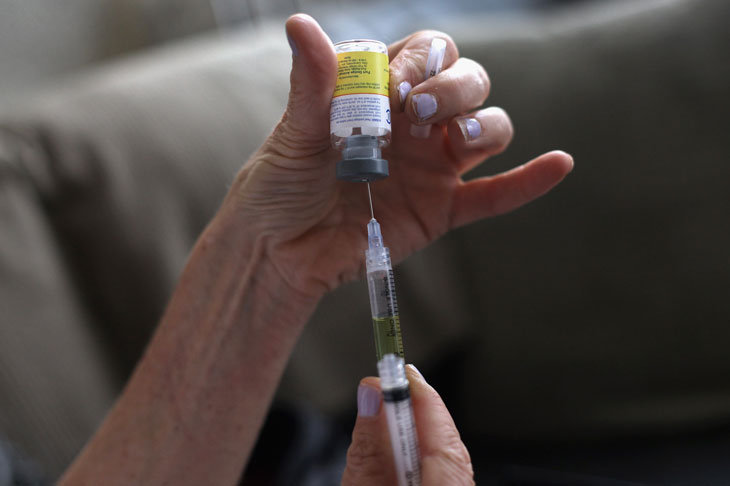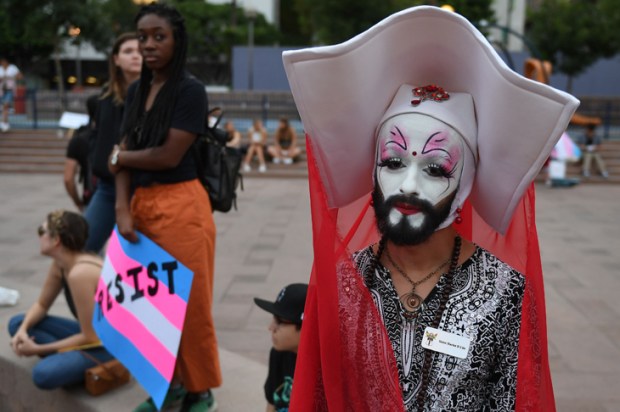Dr Henry Marsh, British neurosurgeon, was displeased when the UK Parliament rejected euthanasia three years ago. The good doctor said, ‘Even if a few grannies get bullied into [suicide], isn’t that the price worth paying for all the people who could die with dignity?’
As euthanasia returns to the federal arena, courtesy of an equine exchange between Prime Minister Turnbull and Senator David Leyonhjelm, we should give some thought to those grannies.
Our head of state certainly did back in 1995 when euthanasia was last a federal issue. Governor-General at the time, Bill Hayden, explained to doctors on the Gold Coast why he supported euthanasia, not only as a right but also as a positive duty to society.
‘There is a point’, he said, ‘when the succeeding generations deserve to be disencumbered of some unproductive burdens.’
This firm message to society’s unproductive burdens was supported the next day by a former state governor, Sir Mark Oliphant. He told ABC radio about an aged colleague in Canberra who ‘should be dead’ and was cluttering up the world when he shouldn’t be.
Governor-General Hayden had enlightened his audience about past cultures where the grannies and grandads would take poison or wander off into the forests when their usefulness to society was done. The elderly Japanese, defined as such by loss of all teeth, would jump from the rim of a volcano for the greater good. But this is the point: did the toothless Japanese granny jump, or was she pushed?
More subtly, did she indeed jump, but only because of an irresistible cultural push?
That is the insidious new oppression that we do not need to have.
The lonely old people I see in nursing homes have a keen sense of being a burden. They would perceive euthanasia less as a ‘right to die’ and more as a ‘duty to die’. They would get the message that they are no longer welcome, and they would do the right thing by society.
Consider an elderly (now deceased) patient of mine, a woman with depression and minimal self-confidence, who received a vicious letter from a close relative effectively telling her she should be dead, and demanding certain arrangements in her will. She then developed cancer. What would the ‘right to die’ mean to such a patient, so isolated and intimidated?
For sophisticated types like Hayden and Marsh, death on demand would enlarge their autonomy. But given the psychological vulnerability of the average old person, the sense they already have of being ‘unproductive burdens’ and the power of insensitive family or medical staff to reinforce this sense, such a decision will be made from a position of humiliation and weakness.
Former Prime Minister Paul Keating concurred last year, writing, ‘It is fatuous to assert that patients will not feel under pressure once this bill becomes law to nominate themselves for termination’. And the Australian Medical Association President last year, Dr Michael Gannon, cautioned that ‘the sick, the elderly, the disabled, the chronically ill and the dying must never be made to feel they are a burden.’
Hence the AMA’s formal reaffirmation, as recently as 2016, that ‘doctors should not be involved in interventions that have as their primary intention the ending of a person’s life’.
That word ‘intention’ is key to clearing up a lot of confusion on euthanasia. Some people think it is euthanasia if I give granny adequate morphine to stop her pain, but it is not, because my intention is only to ease her symptoms, never to end her life.
Or if her medical team turns off life support because there is no longer any chance of recovery, that is not euthanasia but merely acceptance of dying.
Power corrupts, and the doctor-patient relationship will be corrupted by the power to take life. In Holland, where euthanasia is legal, doctors have unlawfully put to death several hundred patients each year without their consent. In neighbouring Belgium, the circle of criteria for euthanasia has steadily expanded from adults to children; from the terminally ill to those simply ‘tired of life’; from cases of depression and chronic fatigue to those distressed by anorexia; even a 41 year old man who so regretted his sex change operation that he wanted to die. And the Belgian doctors obliged.
Keating sees this slipperiest of slopes as entirely predictable: ‘Once termination of life is authorised the threshold is crossed. From that point it is much easier to liberalise the conditions governing the law. And liberalised they will be.’
Indeed they will be, for if we enshrine in law the curious claim of a ‘right to die’ (as incoherent as the ‘right’ to pay taxes) then who are you to restrict that right?
Plan B is to retain the prohibition on intentional killing as the cornerstone of law, while striving to improve palliative care – a powerful field of medicine that offers, for the first time in history, the prospect of a tolerable death for all in this lucky country.
Importantly, rejection of euthanasia is not dependent on perfecting palliative care for all patients. Nor is its rejection a religious issue. Its rejection stands on the rock-solid ground of social justice, as the Hon. Kevin Andrews explained on presenting his Euthanasia Laws Bill 1996: ‘The people who are most at risk are the most vulnerable, and a law which fails to protect vulnerable people will always be a bad law’.
The Andrews Bill, which vetoed the power of glorified town councils in Darwin and the ACT to determine the great matter of euthanasia, is what the libertarian Senator Leyonhjelm seeks so recklessly to overturn.
For if we open the door to euthanasia, society would not, contra Andrew Denton, go gentle into that good night; it would go brutal as a culture which chooses to make people dead rather than care for them in dying; whose unproductive burdens will freely jump to their death, but only because of an insidious cultural push.
Got something to add? Join the discussion and comment below.
Get 10 issues for just $10
Subscribe to The Spectator Australia today for the next 10 magazine issues, plus full online access, for just $10.
You might disagree with half of it, but you’ll enjoy reading all of it. Try your first month for free, then just $2 a week for the remainder of your first year.














Comments
Don't miss out
Join the conversation with other Spectator Australia readers. Subscribe to leave a comment.
SUBSCRIBEAlready a subscriber? Log in